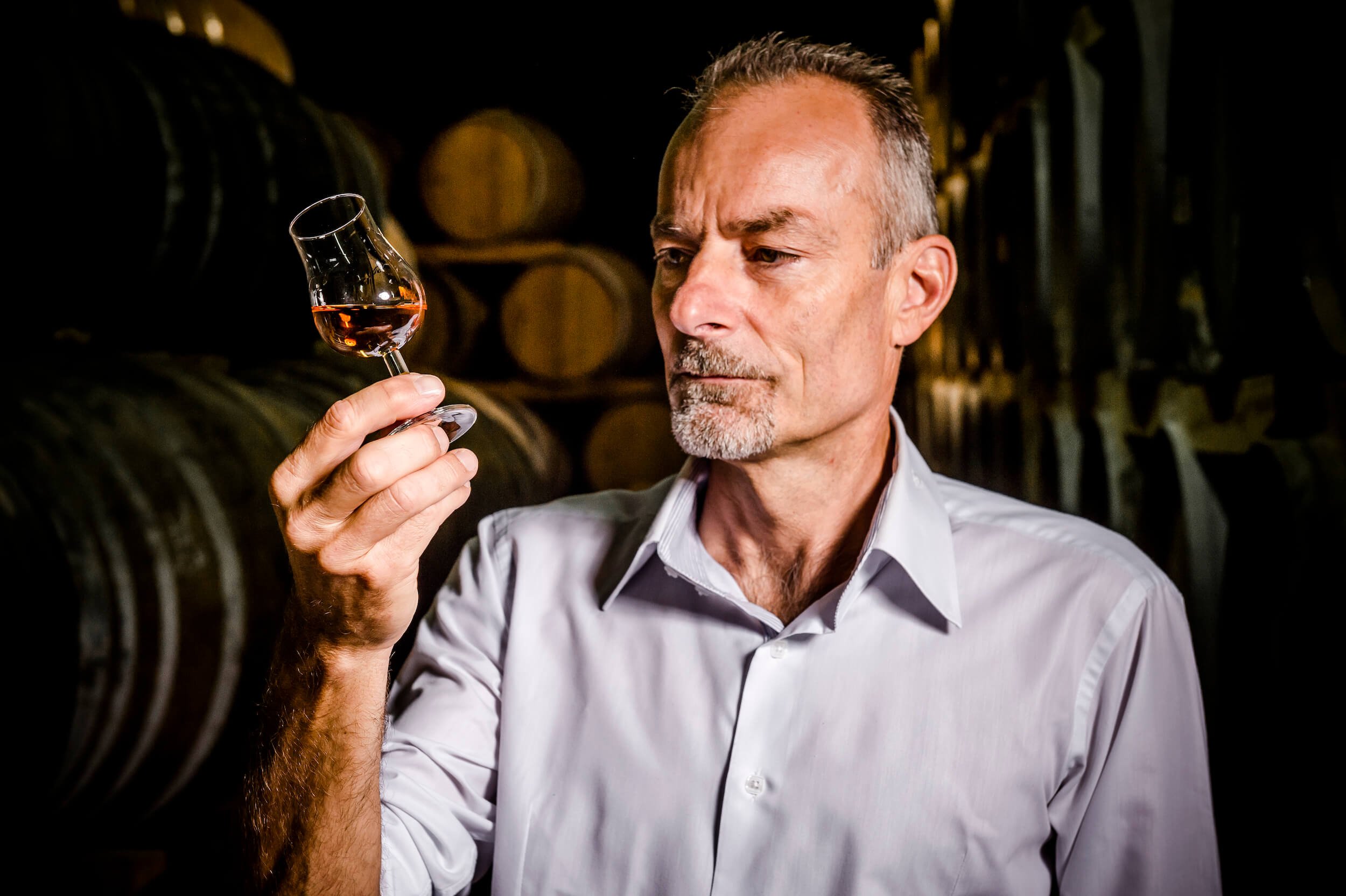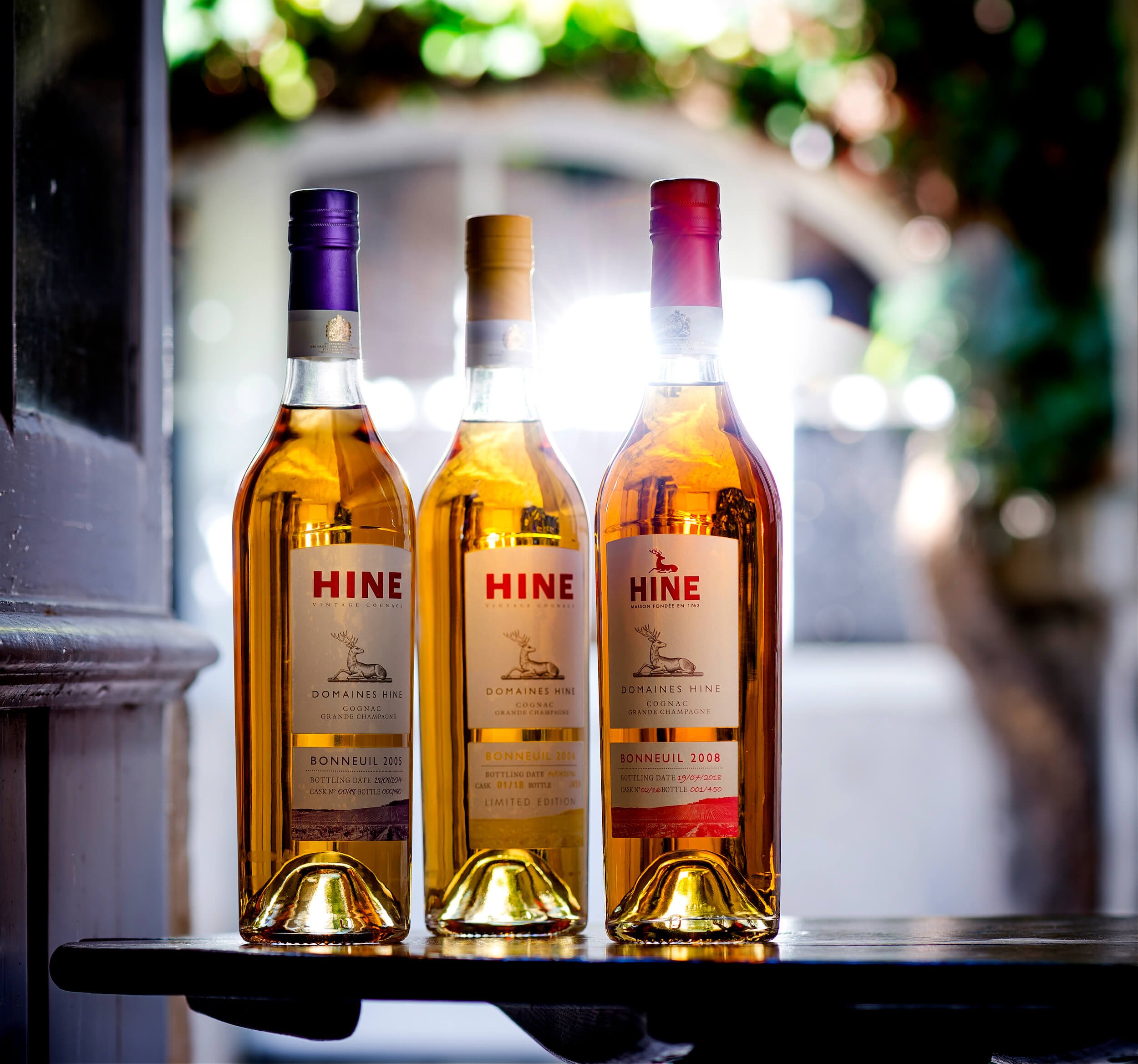The Rise of Single Estate Cognac
Some producers are highlighting terroir in a distinctive spin on a traditional French spirit
Eric Forget photo courtesy Hine
Cognac is traditionally a blended spirit, made from grapes grown across the eponymous region in southwest France. For centuries, rather than zeroing in on a particular site, producers have used a mix of grapes from different crus, or growing regions. That’s starting to change. Over the last couple of decades, smaller Cognac producers have begun releasing single-estate Cognacs showcasing the terroir of distinctive vineyard properties. This concept certainly isn't earthshaking in the world of wine, but for Cognac, it's almost revolutionary.
"From the beginning of the Cognac business, houses blended different batches from different years and different districts," explains Eric Forget, cellar master at Hine, a small Cognac house founded in 1763. "This was done for only one reason—to produce and maintain consistency in taste."
Although most Cognac stems from a single white grape variety, ugni blanc, fruit quality and character vary from region to region. "To make something stable in time you have to play with these differences, as they do with Champagne," says Forget. "They mix different years from different districts and different terroir to maintain the same character and quality."
Today, producers including Hine, Francis Abécassis, Camus, and a handful of others are forging a new tradition with terroir-driven, single-estate Cognacs.
The Taste of Terroir
Blending is a huge boon for Cognac producers because it allows houses to make consistent, high-quality products every year, no matter what nature throws their way. So why mess with a good thing?
For Forget, it’s about showcasing Hine’s best vineyard—and having a little fun. In 2005, he created Hine’s first single-estate Cognac from the Bonneuil property, located in the prestigious Grand Champagne cru.
“We decided to release vintages from Bonneuil because the terroir of this estate is one of the best in Grand Champagne,” he says. “We selected 20 casks just for fun, but some people fell in love with the product.”
Hine Bonneuil 2005, 2006 and 2008 vintages. Photo courtesy Hine
Following the success of the first release, Hine created Bonneuil offerings from the 2006, 2008, 2010 and 2012 vintages.
In the glass, Forget says, Bonneuil estate Cognac is pale, light-bodied and easy to drink, with subtle floral notes and delicate aromas. Using fruit from a single vintage provides additional distinctions. “If you compare our Bonneuil vintages, some are more fruity and some have a little more body, because the weather is different.”
The house of Camus highlights a different cru in its Borderies Signature XO and VSOP offerings. Based in the town of Cognac, the house dates back to 1863 and launched its first single-estate Cognac in 2000.
“The Camus family has its roots in Borderies for 5 generations,” says sales director Daniel Tindal, adding that the house is the largest vineyard owner in the small, sought-after cru. This allowed Camus to create 2 products from the family’s estate.
“The soil is blessed with a characteristic clay-limestone structure that allows Camus to create Cognac that is utterly different from any other,” says Tindal. This translates to deep floral aromas, he says, with balanced fruity character and accents of pastry and vanilla.
Standing Tall Among Giants
With the “Big 4” Cognac houses of Hennessy, Martell, Rémy Martin and Courvoisier representing the vast majority of Cognac sales, releasing single-estate products is more than a way to showcase terroir; it’s a strategy for smaller, independent producers to find a niche in the market.
While some of the large players do own vineyards, the Bureau National Interprofessionnel du Cognac estimates that this acreage covers less than 5 percent of their production needs.
That’s what Francis Abécassis, founder of Domaines Francis Abécassis, had in mind when he founded his company in the early 2000s and launched ABK6 Cognac in 2005.
As a newcomer to the Cognac region, he seized the opportunity to create a new business model based on single-estate products. This concept came naturally to Abécassis, who made wine with his family in Southern France for decades before moving to Cognac in 2000.
“In the world of Cognac, everything was fixed,” says Abécassis of his arrival all those years ago. “Cognac is for old people—for rich people.”
He set out to change that perception by taking a modern business approach similar to that of an estate winery. Instead of buying eaux de vie—the distilled grape spirit that forms the basis of Cognac—from affiliated farmers and distillers as most Cognac houses do, Abécassis and his team handle everything from farming to bottling.
“My goal was to create a house of Cognac, not by being a broker but by being a farmer,” says Abécassis, who now owns 370 hectares (about 900 acres) of vineyards in the region. “At the beginning, [the big Cognac houses] were wondering, ‘Who is this crazy guy?’”
Today Domaines Francis Abécassis encompasses 3 Cognac brands: ABK6— specifically designed to appeal to a younger audience through nontraditional packaging and products—along with Leyrat and Réviseur. Among the company’s many single-estate offerings are the ABK6 VSOP Single Estate Cognac from Fins Bois, the Abecassis Grand Champagne XO and VSOP, and the Réviseur Cognacs from Petit Champagne.
“Depending on the soil and the place, you have different expression,” he says, “It’s very similar to wine. For instance, for ABK6, the terroir is very chalky. I have another single-estate brand, Réviseur, and the expression of the soil is very rich, very smooth and very round. Leyrat, which is pure Fins Bois, is clear and very dry.”
When houses combine eaux de vie from different estates, he adds, site distinctions blur. “In the classic business model, they blend the Fins Bois with the Petit Champagne with the Grande Champagne with the Bons Bois with the Bois Ordinaires,” says Abécassis of the various crus. “Yes, the taste is the same every year and they do a really good blending job, but their taste is the taste of the brand. My taste is the taste of the terroir.”
For the time being, producing single-estate Cognac remains the domain of the smaller houses. None of the “Big 4” houses currently offer a single-estate product.
The main reason, Tindal says, is because creating an estate product requires the producer to own a large amount of vineyard acreage within a single cru—and most houses do not. Instead, he says, “The majority of Cognac houses select and purchase wine spirits from winegrowers in different crus.”
The Future of Single-Estate Cognac
Of the roughly 300 Cognac houses in the region, only a small number produce single-estate products. However, says Abécassis, the growth of his brands shows that the concept is gathering steam.
“At the beginning I was not sure it would be a success because I didn't have any brand name, I didn’t have any network,” says Abécassis, who is now one the region’s largest independent producers.
It also didn’t help that single-estate Cognac was practically unknown at the time. “The concept was not so common, so it was difficult,” he says. “We are perhaps 10 or 15 producers now.”
As the Cognac industry continues to evolve and modernize, that number is likely to keep growing in the years to come.




